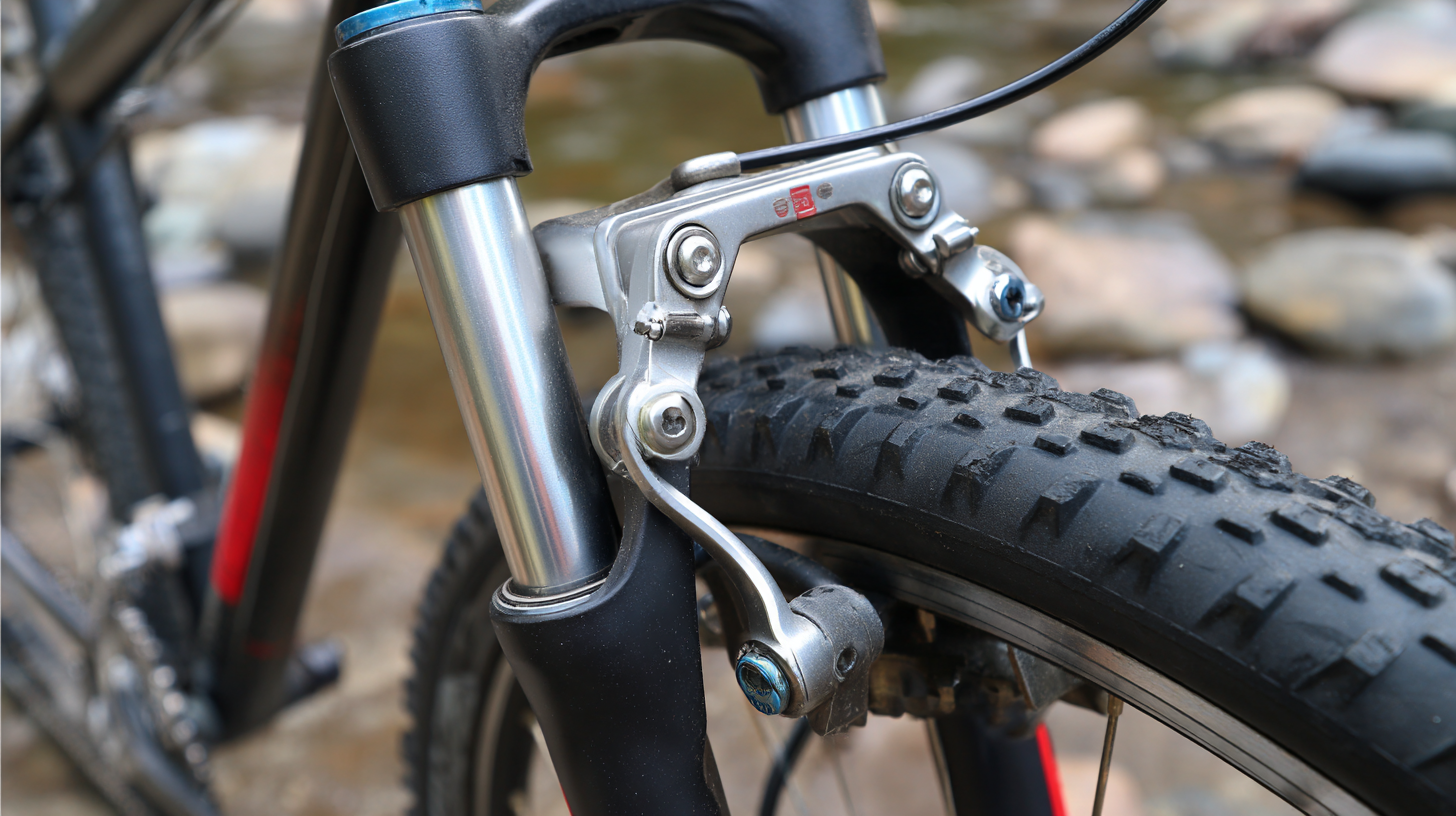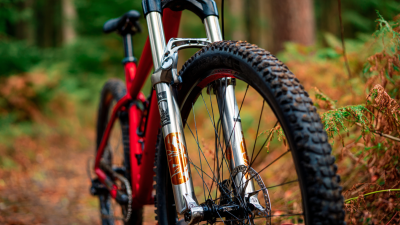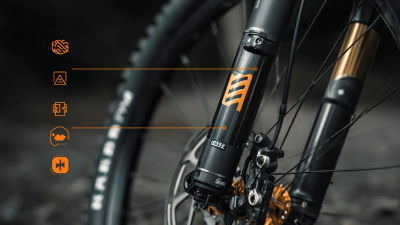When it comes to enhancing your bike's stability and performance, understanding the role of the "Bicycle Fork" is crucial. The bicycle fork plays a pivotal role in determining how a bike handles various terrains, influences steering precision, and affects overall ride comfort. With countless options available on the market, from rigid to suspension forks, knowing the key characteristics, types, and adjustments of bicycle forks can significantly impact your cycling experience.

This guide will provide valuable insights and tips to help you select the right bicycle fork tailored to your riding style and needs, whether you're a casual commuter, a mountain biking enthusiast, or a speed-seeking road racer. Dive into the world of bicycle forks and unlock the potential for improved stability and performance on every ride.
When it comes to bicycle forks, understanding their types and features is crucial for enhancing your bike’s stability and performance. There are mainly four types of bicycle forks: rigid, suspension, dual crown, and single crown forks. Rigid forks are often found on road bikes and are designed for efficiency and speed. According to a 2022 industry report by the National Bicycle Dealers Association, rigid forks account for approximately 25% of sales due to their lightweight nature and low maintenance requirements.
On the other hand, suspension forks are predominant in mountain biking and provide a level of shock absorption that significantly improves handling on rough terrain. Data from the International Mountain Bicycling Association indicates that bikes with suspension forks can handle bumps and jumps up to 30% better than those with rigid forks, making them the preferred choice for off-road enthusiasts. Dual crown forks, often used in downhill bikes, provide even greater stability and control at higher speeds due to their robust construction, while single crown forks balance performance and weight for versatile cycling. This diversity in fork types allows riders to optimize their bike setups based on riding style, terrain, and personal preference, ultimately enhancing their cycling experience.
| Fork Type | Material | Weight (grams) | Travel (mm) | Best For |
|---|---|---|---|---|
| Rigid Fork | Steel/Aluminum | 900 | 0 | Road Cycling |
| Suspension Fork | Aluminum/Carbon | 1,800 | 100 | Mountain Biking |
| Fat Bike Fork | Aluminum/Steel | 1,200 | 0-120 | All-Terrain |
| Carbon Fork | Carbon Fiber | 600 | 0 | Performance Road |
| Adventure Fork | Aluminum | 850 | 50 | Bikepacking |
Bicycle fork performance is heavily influenced by the materials used in their construction. In recent years, advancements in technology have led to a variety of materials such as carbon fiber, aluminum, and steel. According to a report from the International Bicycle Federation, carbon fiber forks are more rigid and lightweight compared to their aluminum and steel counterparts, which translates to improved handling and increased stability at high speeds. This is critical for cyclists seeking to enhance their performance on competitive terrains.

When choosing a bicycle fork, consider the trade-offs between weight and durability. Steel is renowned for its strength and longevity, often preferred for touring and commuting bikes. However, aluminum offers a more lightweight option with decent strength, making it popular among road cyclists. Carbon fiber, while offering superior performance advantages, comes with a higher price tag.
Tips:
The geometry of bicycle forks plays a crucial role in determining a bike's stability and handling characteristics. Key elements such as rake, offset, and axle-to-crown length directly influence how a bike reacts during turns and on varied terrain. For instance, a fork with a greater rake can enhance stability by allowing the front wheel to trail behind, which makes the bike feel more secure when navigating downhill or through rough paths. Conversely, a shorter rake may lead to quicker steering responses, ideal for competitive racing where sharp handling is paramount.
Moreover, the fork's angle also affects weight distribution and balance. A steeper head angle can provide more responsive handling, allowing riders to make rapid adjustments in direction. However, this may come at the cost of stability, particularly at high speeds. On the other hand, a shallower angle tends to be more forgiving, contributing to a smoother ride over obstacles. Understanding these nuances of fork geometry enables cyclists to select a configuration that best suits their riding style, enhancing both their performance and overall cycling experience.
Bicycle forks are crucial in determining the stability and performance of your ride. One of the most significant features to consider when evaluating forks is their adjustability. Modern bike forks often come with adjustable settings for preload, compression, and rebound. This allows riders to tailor their suspension to best fit their riding style and conditions, enhancing comfort and control on various terrains.
When it comes to adjustability, here are a few tips: First, familiarize yourself with the specific adjustment options on your fork. Understanding how each setting affects handling can help you make informed decisions. Second, experiment with different settings during practice rides to find the sweet spot that suits your preferences. Lastly, keep in mind that environmental factors, such as weight changes or weather conditions, can influence your fork's performance, so be ready to tweak your settings accordingly.
In addition to adjustable features, the overall design of the fork plays a pivotal role in ride quality. Choose forks with quality dampers to help absorb shocks and improve stability. Also, consider the material; lighter forks can enhance agility while maintaining the necessary durability for demanding trails. Adapting your fork setup can significantly elevate your cycling experience and ensure a smooth, enjoyable ride.
When selecting the right bicycle fork, it's essential to consider your cycling style and specific needs. Bicycle forks come in various designs, materials, and specifications, and choosing the right one can significantly enhance your bike's stability and performance. According to a 2021 report by the Bicycle Product Suppliers Association (BPSA), over 40% of cyclists notice improved handling after upgrading to a fork that suits their riding style, whether it be for cross-country, trail riding, or competitive racing.
For instance, if you are an aggressive mountain biker, a fork with a wider profile and advanced suspension technology can be beneficial. Recent studies indicate that forks designed for downhill biking can reduce vibrations by up to 25%, providing a smoother ride on rough terrain. On the other hand, road cyclists may prefer lightweight carbon forks that improve aerodynamics. A survey by Cycling Weekly reveals that 55% of road bikers value fork stiffness and responsiveness, which are crucial for speed and control, especially on descents. By aligning your fork choice with your cycling preferences, you optimize both your performance and enjoyment on the bike.







